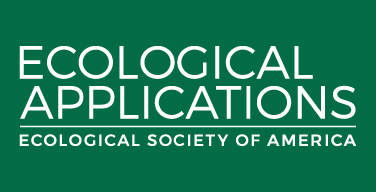
Saving Florida’s only population of rare, endangered orchid from extinction
Researchers have pinpointed the biggest threats to the only population of rare, endangered mule ear orchids in the U.S.

Researchers have pinpointed the biggest threats to the only population of rare, endangered mule ear orchids in the U.S.

The iconic yet endangered Amami rabbit has been shown to play a key role in seed dispersal for the non-photosynthetic plant Balanophora yuwanensis.

A camera-trap study of two ecosystems – one with pumas and one without – adds to scientists’ understanding of the many ways apex predators influence the abundance, diversity and habits of other animals, including smaller carnivores.

High-severity wildfire is increasing in Sierra Nevada and Southern Cascade forests and has been burning at unprecedented rates compared to the years before Euro-American settlement, according to a study from the Safford Lab at the University of California, Davis, and its collaborators.

Australian scientists have developed virtual models of the Murray River to reveal a crucial link between natural flooding and the extinction risk of endangered southern bell frogs.

Scientists from the University of Helsinki in Finland and the Universities of Stellenbosch and Nelson Mandela in South Africa have compiled publicly available rhino population data for African countries where rhinos occur, disaggregated by state, private, and communal land types.

New research shows how humans are a substantial source of mortality for wolves that live predominantly in national parks — and more importantly, that human-caused mortality triggers instability in wolf packs in national parks.

by Staatliche Naturwissenschaftliche Sammlungen Bayerns January 11, 2023 Ein unglaublicher Fischfang im Bodensee gab Expert:innen seit 2014 eine ganze Fülle von Rätseln auf. Wissenschaftler:innen der Fischereiforschungsstelle Langenargen (FFS/LAZBW) sowie des Wasserforschungsinstituts der Schweiz (EAWAG) entdeckten damals einige Exemplare des Tiefseesaiblings in ihren Netzen – nachdem dieser über 40 Jahre lang verschollen war. Hatte man den bis zu 25 cm langen…

New research has identified North America’s climate change refugia, habitats that will be the most likely to support the persistence of the greatest amount of biodiversity in the face of a changing climate.

Research supported by the Northeast CASC, and recently published in Ecological Applications, has shed light on the knowledge gaps that need to be addressed to effectively manage invasive species.

When an outbreak of sylvatic plague decimated black-tailed prairie dog numbers in the Thunder Basin National Grassland in 2017, researchers saw an opportunity for a “natural experiment” to explore the impact of the rodents’ die-off on the plants and other wildlife in that area of northeast Wyoming.

by CNRS December 24, 2022 Un humain vit actuellement à une distance moyenne de 9,7 km d’une zone naturelle, soit 7 % plus loin qu’en 2000 d’après une étude publiée dans Frontiers in Ecology and the Environment. C’est en Europe et dans l’Est de l’Asie que cette distance est la plus élevée avec par exemple 22 km en Allemagne et…

Wageningen researchers have discovered how turtles change their grazing behaviour when they feel safe, and as a result increase their grazing pressure on seagrass meadows.

Comparing the genetics and relocation patterns of habitat “haves” and “have-nots” among two populations of threatened rattlesnakes has produced a new way to use scientific landscape data to guide conservation planning that would give the “have-nots” a better chance of surviving.

In a paper recently published in the journal Ecosphere, McCullough and a team of researchers evaluated the current capacity of freshwater networks in the lower 48 states to act as natural highways for freshwater wildlife.

A multidisciplinary historical ecology research carried out in Pollino National Park reveals that rewilding processes have contributed to the conservation and local expansion of the relic mixed beech-fir forest during the last thousand years.

A team from the Martin Luther University Halle-Wittenberg and the Hamburg Authorities for the Environment, Climate, Energy and Agriculture has now shown how research can benefit from this historic habitat mapping data using habitat maps of the city and federal state of Hamburg as an example.

New research published in the journal Ecology conclusively shows that certain physical traits of flowers affect the health of bumble bees by modulating the transmission of a harmful pathogen called Crithidia bombi.

Prescribed fire could play a role in reducing the abundance of ticks and the transmission of disease pathogens they carry, according to a team of scientists.

A community science case study mapped heavy metals in moss in two industrial-adjacent neighborhoods in Seattle, Washington, yielding findings that have prompted short-term mitigation and followup instrumental air quality monitoring.